Matador Network's Blog, page 2298
March 18, 2014
Mapped: The world’s abortion laws

Screengrab: Center for Reproductive Rights
MARCH IS WOMEN’S HISTORY MONTH. All over the world, students will read about females who have pushed boundaries, shattered ceilings, and made the world better for the children studying them.
Here is another important lesson: The Center for Reproductive Rights created an incredible interactive map where visitors can easily see the differences in international abortion laws. Countries are first sorted into one of five categories:
To save the woman’s life or prohibited altogether
To preserve health
Socioeconomic grounds
Without restriction as to reason
Unknown
Take at look at which countries fall under these general categories, and then click on an individual country to read more about the specifics of the laws there.
As an American, I am aware of the differences in laws across the states. But as an expat, I realized after looking at this map that I don’t know what the laws are in my current home, Japan. Now I know. Abortion after rape is OK, but spousal consent is required.
Take a moment to visit this map and educate yourself on where and under what restrictions women are able to receive an abortion worldwide. 
The post Mapped: The world’s abortion laws appeared first on Matador Network.
Stop giving a f@¢% what they think

Photo: Joseph Mietus
This article was inspired by the work of Julien Smith and The Flinch .
Every day from the moment we wake up, we live our lives caring what other people think of us. We accept the status quo for what it is because everyone around us does.
We tiptoe our way through life by doing things in order to please others, not because it’s what we believe in. Eventually our actions, appearances, and lives become molded by how we think other people perceive us.
How are these pants going to make me look? What will my colleagues think if I speak out? Are those people talking shit behind my back? If I take this job, what will my friends and family think of me?
Just writing that paragraph gave me a headache…. It’s exhausting. It’s dreadful. It has to stop.
Living a life that follows what other people think is a terrible way to live. It makes you become the spineless spectator who waits for other people to take action first. It makes you become a follower. Worst of all, it makes you become someone who doesn’t take a stand for anything.
Today is the last day we live a life dictated by others. Today, we’re going to get to the bottom of the truth. Today is the day we stop giving a f@$%.
No one really cares.
Believe it or not, we’re not that special. We go through our days thinking about how other people might be judging us. But the truth is — those people are thinking the exact same thing.
No one in today’s smartphone-crazed society has time in their schedule to think more than a brief second about us. The fact of the matter is, when we do have time to get our thoughts straight, we’re too busy thinking about ourselves and our own shortcomings — not others’.
A study done by the National Science Foundation claims that people have on average 50,000+ thoughts a day. This means that even if someone thought about us 10 times in one day, it’s only 0.02% of their overall daily thoughts.
“You’ll worry less about what people think about you when you realize how seldom they do.”
- David Foster Wallace
It is a sad but simple truth that the average person filters their world through their ego, meaning they think of most things relating to “me” or “my.” This means that unless you’ve done something that directly affects another person or their life, they’re not going to spend much time thinking about you at all.
I’ve always enjoyed watching performers trying to hustle some change at the New York City train stations. These people simply don’t give a f@$%. But the more interesting observation I made is how the spectators act. Rather than watching the actual performers, most people are looking around to see how other people are reacting. If people are laughing, they start laughing too. But if people aren’t paying attention, they also pay no mind.
Even when provided the blatantly obvious opportunity to judge someone, people are still thinking about how others may perceive them.
Once you understand that this is how people’s minds work, it’s a big step towards freedom.
You can’t please everyone.
It’s impossible to live up to everyone’s expectations.
There will always be people — no matter what we say or how we treat them — that will judge us. Whether you’re at the gym, at work, taking the train, or even online playing Call of Duty. Even now it’s happening. You’ll never be able to stop people from judging you, but you can stop it from affecting you.
Think about the worst thing that could possibly happen when someone is judging you or what you’re doing. Chances are, nothing will happen. Absolutely nothing. No one is going to go out of their busy lives to confront us, or even react for that matter. Because as I mentioned before, no one actually cares. What will happen is that people will respect you for claiming your ground. They may disagree with you, but they’ll respect you.
Start standing up for what you believe in — causes, opinions, anything. You’re going to have people that disagree with you anyways, so why not express how you truly feel?
“You have enemies? Good. That means you’ve stood up for something in life.”
- Winston Churchill
I’ve learned that it’s better to be loved< by a few people you care about than to be liked by everyone. Your family, friends, spouse -- these are the people who love you for who you are, and the people who will be there for you during your worst times. Focus on these people. They’re the only ones that matter.
You reap what you sow.
Worrying too much about what other people think can become a self-fulfilling prophecy, because the way we think starts to become the way we behave. These individuals become people-pleasers and overly accommodating to others, thinking it will stop them from being judged.
In fact, the opposite is true. Most people don’t like pushovers. The behavior we use in an attempt to please others can actually cause the reverse.
And if how we think affects our behaviors, then how we behave affects who we attract. This means that if you’re a pushover, you’re going to be attracting others in your life who are also pushovers. This can be a dangerous path to go down if you don’t recognize its consequences.
It’s been said that we are the average of the five people we hang out with the most. When we start to attract and associate with people who share our same weaknesses, we’re stuck. We stop growing, because there’s no one to challenge us to be better. We start thinking this is the norm, and we remain comfortable. This is not a place you want to be.
Now let’s talk about the cure. Here are 5 ways to stop giving a f@$%.
1. Know your values.
First and foremost, you need to know what’s important to you in life, what you truly value, and what you’re ultimately aiming for. Once you know who you really are and what matters to you, what other people think of you becomes significantly less important. When you know your values, you’ll have something to stand up for — something you believe in.
You’ll stop saying yes to everything. Instead, you’ll learn to say no when friends pressure you to go bar-hopping, or when a tempting business opportunity distracts you from your business. When you have your values straight, you have your shit straight.
2. Put yourself out there.
Now that you know what your values are, it’s time to put yourself out there. This can be done several ways. Here are a few suggestions:
Blogging
Wearing a polka-dot sweater
Public speaking
Flirting/asking someone out
Keep in mind that when you’re doing any of these activities, you have to speak your mind. Be honest with yourself and what you share, because the world doesn’t need another conflict-avoider who does what everyone else does.
3. Surround yourself with pros.
Surround yourself with people who are self-assured and live life without compromising their core values. These people will rub off on you quickly.
One of my best friends, Cody, has been a big influence on me. Having spent the summer with him, I’ve observed countless times where he strongly voiced his opinion on controversial topics. What I learned was that he was simply voicing opinions that people already had in their heads but were too afraid to voice. People admired him for being so honest and direct, even when they disagreed with his views.
Thanks for not giving a f@$%, Cody.
4. Create a “growth list.”
OK, now we’re getting personal. I haven’t told anyone this, but I have this list called the “growth list.” A growth list is comprised of all the things in life that make you uncomfortable. These are fears, insecurities — anything that gives you the jitters.

My growth list.
Here’s how it works: You start by writing all the things that make you feel uncomfortable. Then, one by one, you do them. Once you complete the task, you move on to the next. Repeat.
My first growth task was taking a cold shower (The Flinch). I turned the water as cold as it could get, and I could feel my body shake before I even entered the shower. This was the inner bullshit voice in my head talking.
It was hard at first. But, surprisingly, it got easier the second time. Then even easier the third time. Before I knew it, my body stopped shaking — I was no longer uncomfortable. I’ve conquered my fear.
This exercise does wonders. I have yet to find a better way to get out of my comfort zone. You can read all the books in the world about being confident or getting over your fears, but if you don’t take action, you’re just someone who’s read how to ride a bicycle without ever having ridden one.
5. Travel alone.
If you’re looking for an ultimate transformation that combines all of the points above, you should travel alone. Traveling with other people can be fun, but you won’t get the opportunity to truly get out of your comfort zone. You’ll be exposed to different social cultures, break social norms that you didn’t even know existed, and ultimately be forced to burst out of your small bubble.
Bring as little as possible, and fit everything into one backpack. Plan nothing, except for a one-way flight to your destination. Figure everything else out when you’re there. Trust me, you’ll be just fine.
It won’t be easy initially, but don’t get discouraged. Being comfortable with the uncomfortable will grow with time. I continue to struggle with it every day, as do many others. But you need to get started today.
The world is already full of people who obey the status quo. But the people who don’t give a f@$% are the ones that change the world.
Be the latter. Start living life the way you want, be fearless like you once were as a child, and always, always stand up for the truth.
Someone has to. 
This post was originally published at The Growth List and is reprinted here with permission.
The post How to stop giving a f@$% what people think appeared first on Matador Network.
These animal parents are a$$holes
THE CUTENESS OF a panda is just an adorable sham, a distraction for stupid humans to put time and effort into “saving” them from extinction; meanwhile, pandas contribute to their own demise. But I suppose humans do as well. The following video is definitely evidence of “nature versus nurture”; I just called my parents to apologize for putting up with me during my angsty teenager phase, noting that my life could have been worse — I could have been born a seahorse. 
The post These animal parents are total a$$holes appeared first on Matador Network.
7 signs you're from Canada

Photo: Rafael Chacon
1. You get Tim Hortons withdrawals.
Canadians love Tim Hortons. Every one of us that’s outside of Canada has Tim Hortons withdrawals, and it’s always undoubtedly the first stop on the way home from the airport after visiting a foreign country. Every time a friend from another country visits, we bring them to Tim Hortons and make them order a double-double (two creams, two sugars). When they take their first sip, we anxiously await their response — and get incredibly offended when they shrug and say, “It’s just…coffee.”
Fine, so the coffee’s average, but Tim Hortons is still a Canadian cultural staple and one we take VERY seriously. The commercials are probably half the reason why — they’re 30 seconds of nostalgia, and kids playing hockey, and just general pulling-at-our-Canadian-heartstrings. When living abroad, I actually looked up the commercials on YouTube just to get a little taste of home. And I know I’m not the only one.
You can bet that every good Canadian on a road trip in Canada has downloaded the Tim Hortons app. I know I want to know exactly how far I am from a Tim’s at any point, in case I need my coffee-and-a-donut fix.
2. Your definition of Canadian is “not American.”
There’s absolutely no way to piss off a Canadian better than to call them an American. While it’s an incredibly easy mistake to make in light of the very similar culture and accent, we take it personally when people don’t automatically know we’re Canadian. We feel you should just be able to tell, somehow, due to our mannerisms and the Canadian sayings (eh?).
When asked what defines Canada as a country, our response is always along the lines of “we’re nicer,” “we have free healthcare,” or “we’re colder” — all direct comparisons to our neighbors south of the border. We may watch American television, use American products, and wear American clothes, but we’ll always still insist we are visibly very different, dammit!
3. It’s still a shock to see cereal boxes in only English.
Because of the Official Languages Act, virtually every single label in Canada is written in both French and English. This includes everything from shirts to soup to shampoo. Every single child in the country began learning French by reading the backside of the cereal box, picking up words like “honey,” “sugar,” and “free” (miel, sucre, and gratuit).
For most people, this is all they ever learn — and yet it’s still surprising to most Canadians to see an all-English cereal box. Seeing products in both English and Spanish practically stops my heart.
4. You use the metric system…sort of.
Canada converted to the metric system in the 1970s, and yet there is still widespread use of the imperial system everywhere.
While we love to make fun of Americans for not converting to the metric system like the rest of the world, we have yet to fully convert ourselves. We still measure height in feet and inches and weight in pounds. Pool, oven, and body temperatures are measured in Fahrenheit, while air temperature is Celsius.
It seems we’re still in a state of mid-conversion, with no signs of ever fully using the metric system in the near future.
5. You grew up with every chocolate bar imaginable.
Canada has the best chocolate — and yes, it is a chocolate bar, not a candy bar.
We are the middle ground between American (Nestlé) and British (Cadbury) chocolate companies, so we get all the goods. Americans don’t get to know the joys of Dairy Milk, Caramilk, Aero Bars, and the real Smarties (candy-covered chocolate, kind of like M&Ms), while 3 Musketeers, Baby Ruth, Butterfinger, Oh Henry!, and Skor aren’t available outside North America. And then we have our exclusively Canadian brands, such as Coffee Crisp, Crispy Crunch, Jersey Milk, and Wunderbars.
You know you were born and raised Canadian if you got the biggest selection of any other country on Halloween.
6. You measure distance in time.
When people ask where I’m from in Canada, I tell them I live about two and a half hours from Toronto, and it almost always results in a blank stare. Canadians rarely have any idea how many kilometers it is to the next town — they only know how long it takes to drive there.
Driving is the main (and frequently the only) way to get around Canada, so it makes sense that we like to know how long it will take to get somewhere. Ask us how many kilometers it is from Toronto to Montreal, and we’ll give that blank stare right back to you. This has happened to me a few times, and you’d think I’d have figured out the mileage by now, but it just doesn’t seem to matter. 5½ to 6 hours makes way more sense than 542km ever would.
7. Every conversation begins and ends with the weather.
If you want to pique a Canadian’s interest, just start talking about the weather. Canadians love to talk about the weather. Hot, cold, rainy, sunny, snowy, icy — it doesn’t matter. We’re fascinated by the weather. It might have something to do with the fact that our weather changes so frequently. It can be 15°C (60°F) one day, and -15°C (5°F) the next.
One thing you can be sure of, though, is that if it’s winter, we WILL be complaining about the weather, regardless of what it is. If it’s a beautiful, sunny winter day, it’s still too cold. If it’s snowing, we’ll complain that we have to shovel later. God help us if it’s raining in winter — it isn’t cold enough if it’s raining!
We absolutely love to complain about the weather, and it’s a sure sign you aren’t a real Canadian if you actually like the snow. 
The post 7 signs you were born and raised in Canada appeared first on Matador Network.
The next generation of beatboxers
BEATBOXING IS A VOCAL FORM that blew up as one of the original elements of hip-hop in the 1980s. Early masters from that era such as Doug E. Fresh still rock crowds on occasion, as in this clip of beatboxing and freestying with Will Smith from 2012.
These days, beatboxers are more influenced by electronic music and dubstep than rap or hip-hop, says Kaila Mullady, a 21-year-old beatboxer from Long Island. She herself loves indie-alternative, and one of her beatboxing colleagues is also an opera singer.
And unlike the world of hip-hop, where the goal is to outdo your opponents and declare yourself number one, beatboxing favors a more collaborative approach.
In a televised battle in Mexico City, two artists — El Akdmiko and Owner Beatz — seemingly compete against one another. But while one beatboxes, the other dances to his competitor’s flow. When one switches up the beat to make it a little bit more like reggaeton, the other follows suit. “It’s a conversation,” says Mullady, and one that she’s often had with non-English speakers.
As beatboxing popularity spawns widespread competitions, an international championship, and even a beatboxing-only television network, here are some massive talents taking it to the next level.
ALEM (France)
Current vice-world champion beatboxer. Distinct style, hella dubstep influence. From what I can tell, his beats are less melodic and more focused on speed and variation. The French-born DJ began by “copying the beats I made on the drums.”
BMG (France)
Goes by the tagline, “Human beatbox is universal.” Seamlessly balances two disparate rhythms/basslines at once. Names Jamaican dancehall as a big influence.
Mouzik the Dream Team (Taiwan)
From Taipei, Taiwan, come three young men who function like an a capella beatboxing choir — each person imitating a different instrument.
Kaila Mullady (USA)
From Long Island, NY. She’s a big presence in the beatboxing world, and among its remarkably few women. Mullady travels several times a month, plays shows across the country, and occasionally the world.
While Mullady views the obvious gender disparity in her scene as something like fodder — “it’s motivating,” she says — she faces a barrage of odd comments after each performance.
“I get off stage, and the compliment I get is such a backhanded one. It’s always like, ‘Oh my god, that’s so good for a girl!”
She also teaches beat rhyming to children. It’s “helping kids figure out, what is the music in your head?”
Who are your favorite beatboxers? 
The post The next generation of beatboxers blowing up around the world appeared first on Matador Network.

48 epic dream hotels [pics]
A GOOD HOTEL CAN MAKE or break a trip. The worst hotel in the best place is still going to make retiring after a long day an unfortunate experience. The best hotel in the worst place, on the other hand, can be something of an oasis. Take the best hotels and put them in the best places, and you’ve got a private slice of the vacation you’ve always dreamed of.
Here are 48 absolutely epic dream hotels.
1. Ladera Resort, St. Lucia


Possibly the singular spot for your perfect Caribbean excursion, the Ladera Resort represents the intersection between design, luxury, and the ideal location. Amenities include a full spa, a host of excursion experiences, and the ability to swing straight from a bench into the pool. Equally sick: Jade Mountain Resort.
2. Manta Resort, Tanzania



Ever wanted to be able to go down the stairs of your resort room, hoist the blinds, and be stared down by schools of fish? Can you get over the fact that in doing so, you’ll be painfully aware that your accommodations are anchored offshore? If you answered yes to both of those questions (as I have), then the photos of the Manta Resort have probably inspired you to add Tanzania’s Pemba Island to the bucket list.
3. Äscher Cliff, Switzerland

More of an inn and restaurant than a luxury resort, this getaway built right into an Ebenalp cliff is the best spot to take a breather on your trek up the northern Alps. The views here will keep you charged as you continue your trip through the Swiss mountains.
4. Giraffe Manor, Kenya


These images are not photoshopped. At Giraffe Manor, located in a suburb of Nairobi, giraffes belonging to the resident breeding and conservation program will join you for breakfast.
5. Hotel Kakslauttanen, Finland

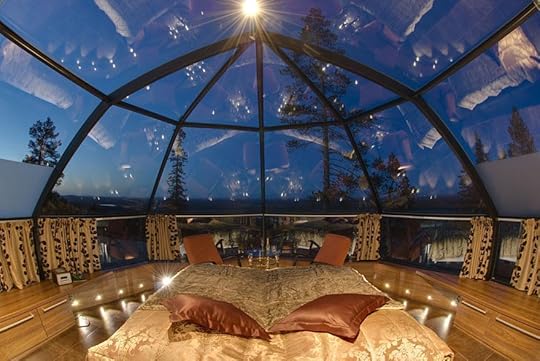

If you’ve never heard of this place, you’ve probably spent an enviably small amount of time on the internet. With its infamous glass igloos and log cabins, the Hotel Kakslauttanen offers an exclusive inside-while-outside winter experience. You know, so you can be immersed in the beauty of frozen forests and incredible winter auroras while simultaneously safe and comfortable inside your own private bubble of warmth.
6. Ubud Hanging Gardens, Bali


One part boutique hotel, one part epic infinity pool over the Ayung gorge, one part Payangan jungle, and one part architectural masterpiece combine to make one smooth cocktail of a resort. While the Ubud is known for its terraced tree villas, it’s really all about the award-winning pool. (Literally, this pool has won awards.)
7. Icehotel, Jukkasjärvi, Sweden
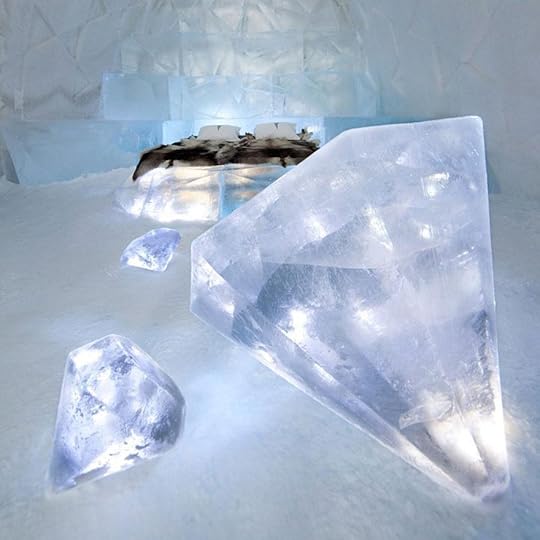


At the absolute top of my bucket list, the Icehotel is like living in an art installation. A very cold art installation. Though the ice accommodations are available for only one season a year (for what I hope are obvious reasons), the hotel also offers “warm accommodations” and a host of summer activities, including “art experiences with ice, and adventures in the surrounding wilderness under the midnight sun.”
8. Cocoa Island Resort, Maldives
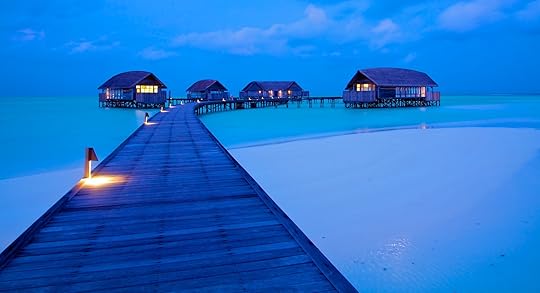


Just a 40-minute speedboat ride from the archipelago’s main airport, Cocoa Island floats as a cluster of 33 over-water suites (straight out from those sweeping white sand beaches you’ve seen in every tropical island fantasy you’ve ever had). With two private diving reefs to explore, who’s got time for spa treatments?
9. Loisaba Star Beds, Kenya

Two sets of outdoor “star beds” can be found in the Kenyan wilderness — the “Kikobo” beds overlook the waterhole from which they take their name, and the “Koija” beds sit on stilts over the Ewaso N’giro river. Each “star bed” is partially sheltered and contains a “Mukokoteni” (a specialty handcrafted bed on wheels, for moving into and out of the shelter). Kenya is known for its wildlife, so you’re bound to see some amazing creatures in this outdoor getaway.
10. Burj Al Arab, Dubai


One of the tallest hotels in the world, the Burj Al Arab sits on a private, manmade island 1,000 feet offshore and is connected to the mainland by a private bridge. Inside the tower (designed to look like the sail of a ship) are 202 double-story rooms, the largest of which covers 8,400 square feet and is the 12th most expensive hotel suite in the world.
11. Treehotel, Sweden

The multi-styled Swedish Treehotel comprises such rooms as: the Cabin, the Mirrorcube, the Bird’s Nest, the Blue Cone, the UFO, the Tree Sauna, and the Dragonfly. Though perhaps a little literal in the naming of the rooms, the architecture and execution at the Treehotel are pretty next-level and make for a unique experience in the Swedish forest.
12. Hotel Marques de Riscal, Spain

Designed by renowned architect Frank Gehry, this luxury hotel is situated in the heart of Spanish wine country in the medieval town of Elciego. The property is famed for its Basque-Riojan cuisine and also has a rooftop library lounge with views of the Spanish countryside.
13. Dedon Island Resort, Philippines


According to the resort’s website, the property’s creators conceptualized Dedon Island as a “kind of laboratory” for realizing experiments in outdoor design, organic farming, and sustainability.
14. Phinda Homestead, South Africa


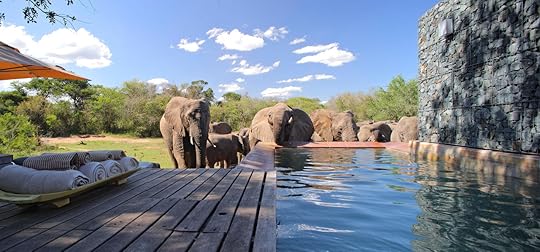
Small-scale and utterly luxurious, the Phinda Homestead is a family-size lodge situated on a private game reserve
within the KwaZulu-Natal region of South Africa. No one around but you, the lodge staff, and the wildlife.
15. Emirates Palace, Abu Dhabi



Managed by the Kempinski Group of hotels and resorts, this seven-star property is the second most expensive hotel ever built. Might as well play the part and arrive via the private marina or helipad.
16. Conrad Maldives Hotel


With its glass-bottomed bungalows and underwater rooms, the Conrad Maldives Hotel has serious appel. To reach it, you have to take a 30-minute private seaplane, but on arrival you can enjoy any of their 101 carefully curated cheeses and 20,000 wines, while being surrounded by whale sharks, manta rays, dolphins, turtles, and “an excellent coral reef.”
17. Alpina Gstaad, Switzerland



The Swiss ski village of Gstaad is one of the top resort areas in the Alps, and the Alpina is pretty much the top-of-the-line accommodations for those who have the scratch. The views from your room’s balcony couldn’t get much better.
18. Hotel de Glace, Quebec, Canada


The first (and only) true ice hotel in North America, Hotel de Glace opened in 2001 and has been rebuilt every December since. With a three-month lifespan, the features of this hotel are different each year, but it’s famous for its recurring chapel, bar, and grand ice slide.
19. Gamirasu Cave Hotel, Turkey



This recently renovated hotel, used since the Byzantine era as a monastic retreat, had been a getaway just outside of Ürgüp, in the Cappadocia region, for centuries before it was converted into a hotel for the public, which pretty much guarantees its awesomeness.
20. Katikies Hotel, Greece


On Santorini (with its signature white-and-blue color scheme), the Katikies Hotel lends further credence to the idea that not only is putting a pool on an island surrounded by water not redundant, but you can do so just about anywhere in Greece and still achieve a killer view.
21. Rayavadee Resort, Thailand

The mac-daddy of Thailand resorts, this place looks like the deserted jungle island you’ve always dreamed of waking up on after a bumpy flight to somewhere boring. To top it all off, after your day of lounging in the luxury hydro-pool your pavilion is outfitted with, you can catch the sunset from this sandy beachside cave restaurant.
22. Hotel Au Vieux Panier, France

Situated in the heart of Marseille, each room at the Au Vieux Panier has been individually decorated by an artist or graphic designer of worldwide acclaim (and the rooms change every year). Not only is there a rooftop terrace where you can look out over the city center, but also a hotel library, perfect for a relaxing night in.
23. Ngorongoro Crater Lodge, Tanzania


The absolutely quintessential African safari resort, the Ngorongoro Crater Lodge acts as steward of the Ngorongoro Conservation Area, a wildlife reserve home to scores of rare and endangered species. It ranks #1 on TripAdvisor as “best stay in Tanzania.”
24. Panchoran Retreat, Bali

Carved out of the Balinese jungle by Irish designer Linda Garland in an ongoing project since the ‘70s, the Panchoran Retreat is a blend of art project, resort, and ecogarden. The retreat has been home to festivals, workshops, and generations of environmentalists conducting research year round.
Click below to see the second half of our list of epic dream hotels to visit before you die.
The post 48 epic dream hotels to visit before you die appeared first on Matador Network.

March 17, 2014
The joke of our slow extinction
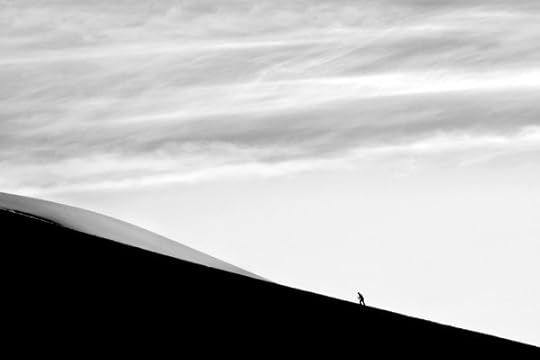
Photo: A~~~
THE FIRST THUNDERCLAP ISSUED like a whip heading north. Above, the swift current of cloud created a kind of optical illusion as it pulled over the bluffs and, combined with the sonic boom, could almost convince me it was the cliff tipping over on me. I tried to take another picture of the glacier’s off-white slope against the grey sky but the battery was dead, even after I’d tried rubbing some static charge into it against the sleeve of my sweater.
Gotta go, I thought.
I’d been on plenty of bald slopes like this during my years treeplanting, up high enough you can feel the ozone before and after a lightning discharge, but it was no excuse to stick around. I knew how quickly summer storms could collapse on you. From the lip of the glacier I could even make out familiar clearcuts, wended into distant mountain ranges like brown lesions, where I’d weathered similar flash storms.
I took one last look at the glacier — even from this distance I could make out its diminishing perimeter, the pressed scree that a century earlier had been buried six feet at this time of year. Growing up in the Slocan Valley in southeastern British Columbia I’d always had peaks and mountain ranges as a backdrop, each with daring and heroic names like Asgard, Loki, Macbeth, and Devil’s Couch. But it’d taken me nearly two decades of living in the same place to explore some of them.
Below, I could make out the small township of New Denver, hedged to Slocan Lake, where I’d set out earlier that morning by kayak. It was a dying city, emptied by high costs of living and an influx of rich homeowners who spent less than two months a year in the area. I felt a grip of regret, and wondered if the glacier that shared its name would suffer the same gradual attrition — a wearing away until there was nothing left. The ice field was like a white flower, sinking back to its source.
There was another interruption of thunder. The small bowl of the glacier funneled the impact like an instrument, and I felt it in my legs and stomach and picked up my pace. Halfway down, following the creek back to the tent, the rain started to accelerate and turned to hail by the time I reached the floor of the narrow valley.
It was all blow-down, Engelmann spruce twisted from their roots like bottlecaps, and when I finally ran the gauntlet of branches and split trunks my clothes were soaked. I dove into the tent, frantic to get out of the weather. My shoulders and the back of my neck stung where the ice had pelted me. Another shock of thunder rippled from above and I could see the walls of the tent shake. A small darkness closed across the sky and was almost palpable, as if someone had slammed a lampshade down on the sun.
I forced my breathing to slow and closed my eyes.
The siege of hail slowed with my pulse to a consistent tapping. I wanted to laugh. My whole body shook with exhaustion. I wrapped my sleeping bag over my shoulders and shivered and peered out of the tent’s flaps once more and saw the glacier winking at me from the summit. There’s a kind of exhilaration in stepping over the liminal barriers of what the body is capable of, in what my childhood hero and poet Gary Snyder had once referred to as a “practice of the wild.”
This practice is an exercise in both gratitude and humility. And out of this a relationship develops, one between human and her environment, which is mutually contingent. That is, a person cannot exist without their environment, just as their environment cannot exist without them — it is the most original and ancient form of symbiosis. And it’s a dying way.
Occasionally it’s still felt by those whose vocation takes them into the wild places. Loggers, treeplanters, trappers, bush pilots. It exists now like an endangered species in First Nation cultures in the area, like the Salish and Sinixt. As I huddled in the shadow of the glacier, I bit back on the clarity of my sadness. It was full of anger, not just at big issues like global warming and the proposed Enbridge pipeline and the previous genocides of cultures who held these ancient values. It was easy to be angry about those things, things I couldn’t be held accountable for, but felt like I needed to be.
I was also angry at myself. That it had taken me so long to come here. At my own negligence to the practice of the wild.
I opened the tent and stepped out into the slash and inhaled as deep as I could manage. The rain had dispersed, but I could hear the small round sounds of water drops falling from the boughs of spruce, their slap on the broad leaves of thimble-berry bushes.
Somewhere through the trees, its voice echoing from the edge of a kettle lake below the bluffs, a loon’s laugh called to me. I put my hands together and called back, trying to signal him that it was safe. There was a long silence, the slow stamp of after-rain on leaves and underbrush. Then another laugh.
It was a joke, I thought. The glacier, me, and this slow extinction. All of it seemed absurd. I had no idea how long the ice and snow above me would last, or how long the loon would keep watch over the valley. But for the moment I felt like I was home, the way only someone who has been absent from it for a long time really can. I felt my own life, my own struggles — university, relationships, traveling — all inextricably tied up in the contemplation of the creek beside the tent, meandering from its source.
I laughed again, shaking with the effort, and my voice was somehow alien and I felt the life around me shrink from it. I laughed harder. I laughed because there was nothing else to do. 
The post The joke of our slow extinction appeared first on Matador Network.

Have you read these books?
WE STARTED passing this around Matador Editorial today: 100 books of which the BBC believes most people have only read 6.
Feels a bit simplistic, to be honest, like there should be more points for Joyce’s Ulysses than Alice in Wonderland. Also, you should get more points if you read a book in its original language — for example, an extra 5 points for 100 Years of Solitude in Spanish.
Here’s the list. How did you do? 
The post The BBC thinks you’ve only read 6 of these books…have you? appeared first on Matador Network.

Streets of Afghanistan published
WE ARE SO PROUD to announce the official launch of Matador Ambassador Shannon Galpin’s book, Streets of Afghanistan.
Shannon, a women’s rights activist who runs the organization Mountain2Mountain, spent four years putting together a collection of photographs that encapsulates “the beauty and the heartbreak” of this diverse country. Her book is available for purchase online, and in select bookshops. Congratulations, Shannon, on making this project a reality!
Watch this behind-the-scenes film to learn more about what went into the making of Streets of Afghanistan, and pick up your copy today. 
The post Published! Streets of Afghanistan, by Matador Ambassador Shannon Galpin appeared first on Matador Network.

#inspiredby contest deadline: 3/24
LUFTHANSA is looking for travelers who want to fly to Istanbul with a professional film crew to film their own #inpsiredby video. The brand will cover flights, accommodation, plus 500 EUR pocket money. Applications are due March 24th. Apply at Facebook.
Your video should be 45-60 seconds in length and filmed in landscape format.
The video should be in one of the following formats: mov, avi, mp4, mpeg.
Videos can be submitted in English or German.
Tell what interests you most about Istanbul. It doesn’t matter if you’ve been there before or not, it’s just important to explain why you want to go there.
It should be easy to recognize you and your voice in the video.
When using images or video sequences in your film, or filming people other than yourself, please ensure you have all appropriate rights to do so.
Your application can be in normal speech, a song, poetry — just show how creative you can be!
This contest is sponsored by our partners at Lufthansa. 
Feature image credit: j0sh via Compfight cc
The post Win an opportunity to travel / film with the #inspiredby contest appeared first on Matador Network.

Matador Network's Blog
- Matador Network's profile
- 6 followers




